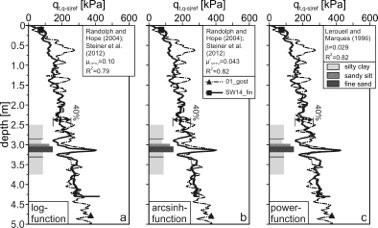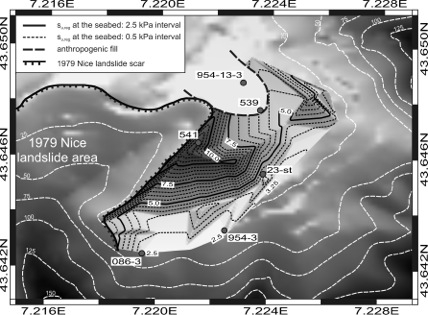In Situ Geotechnical Characterization of Submarine Slope Sediments
Dissertationskolloquium
Veranstalter: Alois Steiner
Ort: GEO-GebÃĪude, Raum 1550 (HÃķrsaal)Beginn: 19.12.2013 16:00 Uhr


Abstract
The exploitation of natural resources (e.g. oil, gas and gas hydrate), development of cable and pipeline routes, land reclamation activities in coastal and nearshore environments, and protection of coastal communities require a sound knowledge of the geotechnical properties and characteristics of sub-seafloor soils, especially when dealing with the stability of submarine slopes. In situ dynamic and static piezocone penetration tests (CPTU) are powerful cost- and time-efficient techniques for measuring geotechnical and stratigraphical properties.
The penetration process of a dynamic-CPTU device results in a non-linear decreasing penetration rate from an initial penetration rate of up to 10 m/s. In contrast, static-CPTU cones penetrate the soil with a constant penetration rate of usually 2 cm/s. This difference, known as strain-rate effect, causes elevated dynamic-CPTU parameters for fine-grained soils. In this thesis, different strain-rate correction solutions are compared (e.g. logaritmic, inverse sin-hyperbolic, power-law, velocity ratio) in order to find the optimal solution and improve it by considering a modified non-dimensional velocity ratio. Visual observations and a simple statistical methods (e.g. two-sample Kolmogorov-Smirnov test), resulting in the coefficients of determination up to 0.82, demonstrate that the modified inverse sin-hyperbolic equation is best suited to correct for the strain-rate effect in dynamic-CPTU tests.
A multi-disciplinary approach described by the combination of bathymetrical, geophysical, sedimentological and geotechnical datasets are used to develop an area-wide sub-seafloor model near the Nice international airport (southeastern France). The sub-seafloor model consists of a geometrical/sedimentological model using bathymetrical map, several core profiles and geophysical chirp transects, and a geotechnical/strength model using results from vane shear and fall cone penetration experiments, high number of dynamic- and several static-CPTU tests. Based on the sub-seafloor model, the role of free gas in the soil and different failure geometries are discussed and demonstrated using 2D numerical slope stability assessments.
zurÞck

